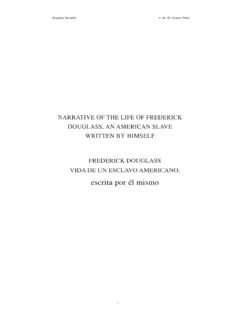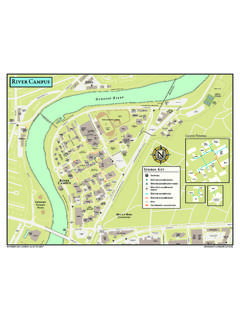Transcription of Current Research Resistant Starch Intakes in the United States
1 Research . Current Research Resistant Starch Intakes in the United States MARY M. MURPHY, MS, RD; JUDITH SPUNGEN douglass , MS, RD; ANNE BIRKETT, PhD. bohydrate compounds that escape digestion in the small ABSTRACT intestine. Objective Dietary fiber represents a broad class of undi- J Am Diet Assoc. 2008;108:67-78. gested carbohydrate components. The components vary in chemical and physical nature and in their physiological outcomes. Resistant Starch is Starch that escapes diges- D. ietary fiber represents a broad class of undigested tion in the small intestine and that may be fermented in carbohydrate components.
2 The components vary in the large intestine. The purpose of this study was to chemical and physical nature, and in their physio- estimate consumption of Resistant Starch by the US pop- logical outcomes. Some of the better known components ulation and to identify key sources of dietary Resistant include cellulose and lignin. It is now widely known that Starch . some dietary Starch escapes digestion in the small intes- Design A database of Resistant Starch concentrations in tine, and upon reaching the large intestine also acts as a foods was developed from the publicly available litera- component of dietary fiber in the body.
3 This Starch could ture. These concentrations were linked to foods reported potentially be a major contributor of fermentable carbo- in 24-hour dietary recalls from participants in the 1999- hydrate in the large intestine. 2002 National Health and Nutrition Examination Sur- Starch exists as large glucose polymers localized in veys and estimates of Resistant Starch Intakes were gen- granules in plants, although processing and preparation erated. can change some of the Starch to nongranular forms. Subjects The study population included 18,305 nonbreast- Starch polymers can either be straight chain (amylose) or feeding individuals in the United States .
4 Branched chain (amylopectin), and both are a source of Statistical analysis The dietary intake of Resistant Starch dietary carbohydrate and energy (1). The structure of was determined for 10 US subpopulations defined by age, Starch polymers and granules influences its digestibility, sex, and race/ethnicity. Three estimates of Resistant so consequently not all starches are equally affected by Starch intake were made for each person based on the digestive enzymes (2). The Starch that is not digested is minimum, mean, and maximum concentrations of resis- called Resistant Starch , and the recognized definition for tant Starch in the foods consumed.
5 Resistant Starch is the sum of Starch and products of Results Americans aged 1 year and older were estimated Starch degradation not absorbed in the small intestine of to consume approximately g Resistant Starch per day healthy individuals (3). based on mean Resistant Starch concentrations (range Four main subtypes of Resistant Starch have been iden- to g Resistant Starch per day). Breads, cooked cereals/ tified based on structure or source (4). Starch that is pastas, and vegetables (other than legumes) contributed physically inaccessible to digestive enzymes is called re- 21%, 19%, and 19% of total Resistant Starch intake , re- sistant Starch type 1 (RS1).
6 RS1 is found in whole or spectively, and were top sources of Resistant Starch . partly milled grains and seeds so would be present in Conclusions Findings from this study suggest that the whole-grain foods. Starch that is Resistant to digestion estimated intake of Resistant Starch by Americans is ap- due to the nature of the Starch granule is referred to as proximately 3 to 8 g per person per day. These estimates Resistant Starch type 2 (RS2); this type of Resistant Starch of Resistant Starch intake provide a valuable reference for is found in raw potato, unripe banana, some legumes, and researchers and food and nutrition professionals and will in high amylose starches such as Starch obtained from allow for more accurate estimates of total Intakes of car- high amylose corn.
7 Resistant Starch that forms from ret- rograded amylose and amylopectin during food process- ing is called Resistant Starch type 3 (RS3). This Resistant M. M. Murphy and J. S. douglass are nutrition science Starch form is found in cooked and cooled foods such as managers, ENVIRON International Corporation, Ar- potatoes, bread, and cornflakes. The fourth type of resis- lington, VA. A. Birkett is a business scientist, Nutrition tant Starch , Resistant Starch type 4 (RS4), is produced by Research Department, National Starch Food Innovation, chemical modification.
8 Bridgewater, NJ. The physiologic effects of Resistant Starch have been Address correspondence to: Mary M. Murphy, MS, studied during the past 30 years in animals and human RD, Nutrition Science Manager, ENVIRON Interna- beings and include health effects in the large intestine tional Corp, 4350 N Fairfax Dr, Ste 300, Arlington, VA and systemic effects. Health benefits in the large intes- 22203. E-mail: tine include enhanced fermentation and laxation; in- Copyright 2008 by the American Dietetic creased uptake of minerals such as calcium; changes in Association.
9 The microflora composition, including increased Bi- 0002-8223/08/10801-0008$ fidobacteria and reduced pathogen levels; and reduced doi: symptoms of diarrhea (5). Systemic effects involve 2008 by the American Dietetic Association Journal of the AMERICAN DIETETIC ASSOCIATION 67. Table 1. Effects of RS2a from high amylose corn on measures of colonic fermentation Reference Length of intake Change in Change in Change in butyrate no. Subjects Subject characteristics intervention (g/d) weight (%) pH concentration (%).
10 8 13 Mb, 10 Fc Hypertriglyceridemia 4 wks 20 * 55*. 9 12 M, 12 F Healthy 2 wks 22 * 45*. 10 11 M, 9 F Family history of colorectal 3 wks 22 * 69*. cancer 11 12 M, 11 F Colonic adenomas 4 wksd 28 12 24 M Hyperinsulinemic 14 wks 30 13 24 M Healthy 4 wks 32 16. 14 8M Healthy 19 d 37 * *. 15 5 M, 6 F Healthy 3 wks 39 * * 38*. 16 7 M, 5 F Healthy 4 wks 55 * a RS2 ( Resistant Starch type 2) is Starch Resistant to digestion due to the nature of the Starch granule. b M male. c F female. d Parallel control study; all other studies were crossover trials.








